Food in Japan is amazing, that’s a fact, and you probably know about it already since it’s definitely no secret. After 10 days in Japan I can confirm that!
In the attempt of recalling all the incredible food I had the luck to enjoy during this trip, I decided to start a series, also in hope that I can reveal to you all a few things I’ve learned.
Food in Japan, contrary to popular belief, is actually quite cheap. Some of my friends actually tell me that it’s more expensive to buy good ingredients and cook at home than it is to eat out! You can eat a delicious and filling lunch with about 5-6$ (think Ramen for example). Of course there are plenty of very fancy and expensive restaurants, but most of them offer lunch menus for less than half price than the evening menus, and these are exactly the same menus!! In this trip I have eaten twice in 2 Michelin starred restaurant with a full menu for lunch for less than 100$, which is incredible value for money. So my advice number one is to try to get to the fancy restaurants for lunch and leave the cheaper more casual options for dinner.
When I prepared for my trip to Japan I was actually a bit nervous about finding bookings for the best restaurants. I started looking into the Michelin guide, and as I discovered that Japan is the country that has the most awarded restaurants in the world, I tried browsing for places there. Most of the restaurants have Japanese only websites and quite complicated to navigate booking systems, that often involve calling or booking at a very specific time of the week for the following week. So I was a bit discouraged because I couldn’t find any spots available in any of the restaurants I was looking at. I had also heard that because of over-tourism, many of the high end restaurants are fairly inaccessible for foreigners (more on this later).
Luckily I have a Japanese foodie friend (they all are!) from Tokyo and she guaranteed that she could get me bookings in fantastic places last minute.
During my very long flight I watched some Tokyo food youtube videos I downloaded, and one in particular introduced me to a website that all Japanese people use called Tabelog. The amazing thing about this website is that it uses ratings and reviews submitted by Japanese people, and it has an English version too! It also allows you to book most of the restaurants through their website (with a small booking fee) in a very easy way, and it allows you to see places near you that have availability at any given time.

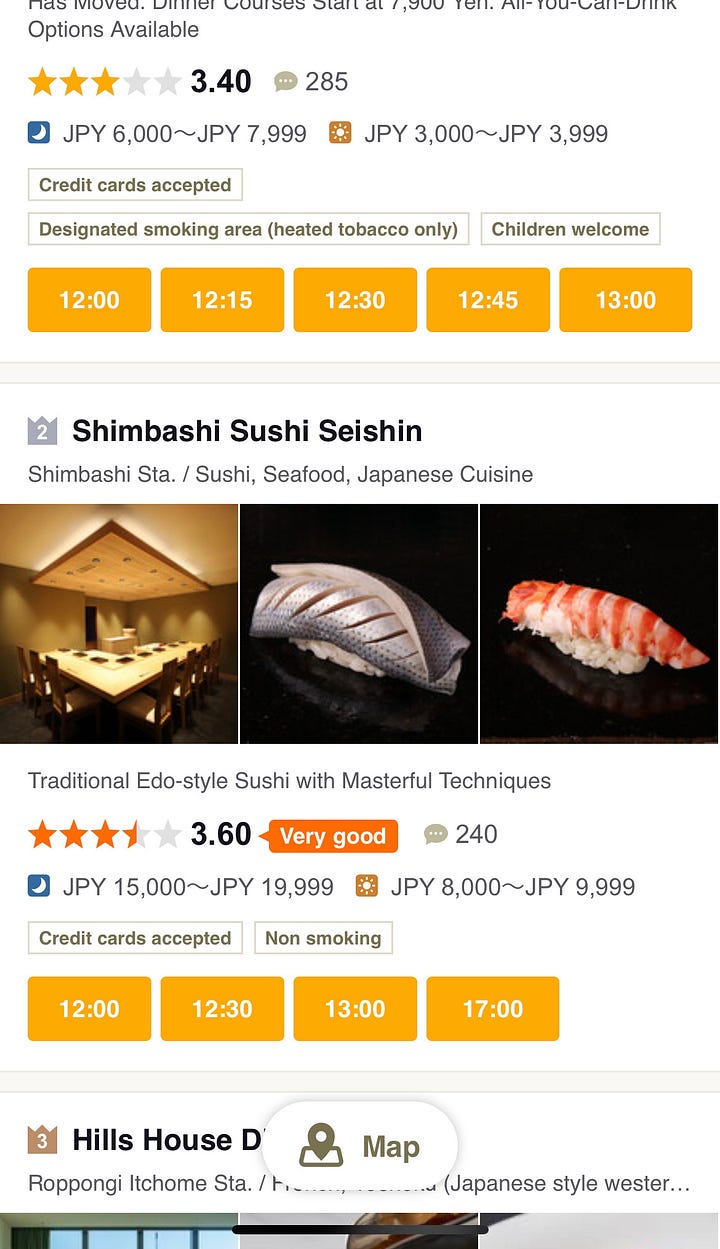
I posted a picture of the app here but the website works much better. Also keep in mind while browsing this site, that anything above 3.5 out of 5 stars is exceptionally good. Not many restaurants make it over 4* and that also says a lot about Japanese culture of unreachable perfectionism.
So I soon discovered that in a city with about 140,000 restaurants, there is no way the Michelin guide could cover all of it, and I trust much more the people of Japan and their reviews to be honest.
Sushi
When you think of Japan you think immediately of sushi. It is definitely the most popular and well known Japanese food abroad. Unfortunately its popularity has led to a bastardisation and dilution of one of the most sophisticated food crafts in Japan, so much that now we consume sushi out of the supermarket fridge and in airports, one of the most paradoxical things in the food world that I can think of…
Sushi is really simple actually, it is rice dressed with vinegar (and sugar and salt) with raw fish on top. But simple and easy ain’t the same thing, and sushi is incredibly sophisticated and very hard to master. Sushi perhaps represents at its best the Japanese concept of shokunin, someone who develops one skill throughout their life, repeating the same and improving slowly day after day. It is a lifelong journey to perfection.
I decided to start and end my Japanese food experience with sushi, and selected two of the highest rated sushi-ya that I could find near me.
The first place that I picked was called Sushi Oumi and I went there for lunch on the first day with Rhiannon.
We sat at the counter with not many other people around and we pretty much had the chef for ourselves. He started with a piece of chu-toro, my favorite part of the tuna. This is the lower part of the tuna belly (called tarantello in Sicily) and it is fatter than a regular piece of tuna but not as fat as otoro. This was my first piece of sushi in Japan and it was so delicious it brought a tear to my eye. The tuna was so tender it melted in my mouth, the rice at a perfect temperature (supposedly body temperature, never cold!) and the wasabi gave it a little punch, what a perfect bite!
The meal proceeded at a steady but not rushed pace, as the chef prepared each time a piece and served it on a plate in front of us. Sushi, contrary to popular belief, should be mostly eaten with hands, and all in one bite (the sushi pieces are much smaller in Japan). It is ok to use chopsticks too but it is a lot harder. All high end sushi places do not provide a small dish for soy sauce. The seasoning is usually added by the sushi master and the wasabi is incorporated between the rice and the fish. The best way to put in your mouth is upside down so that the fish is in contact with the tongue, where tastebuds are.
Many high end sushi places require that you do not wear perfumes when visiting their establishment, as it can interfere with the eating experience.
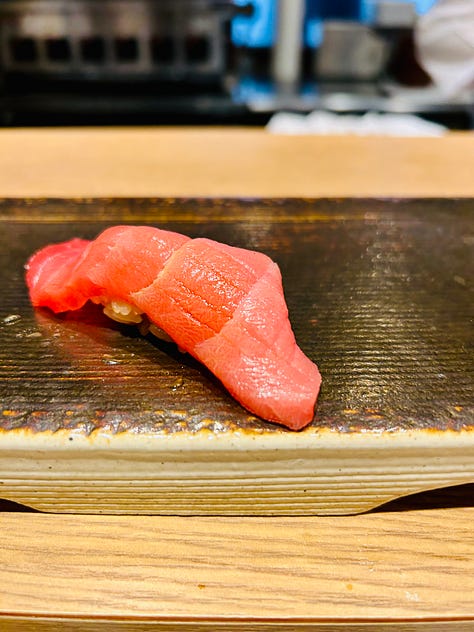

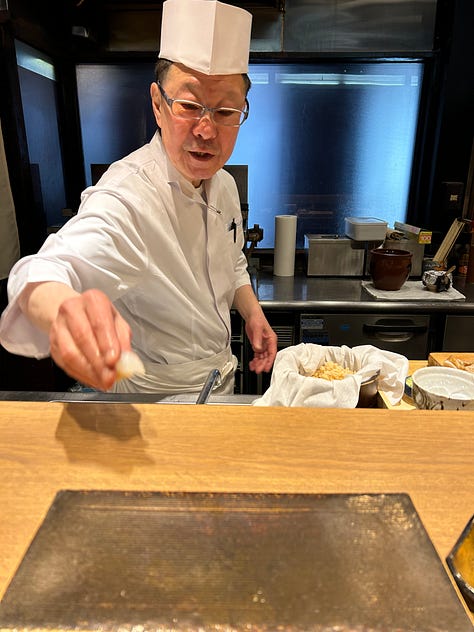
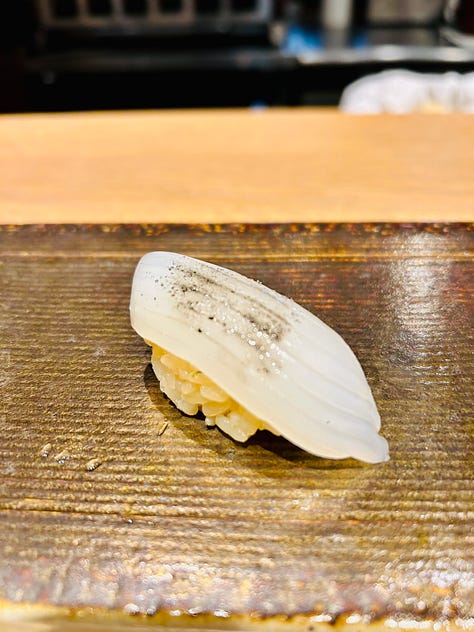
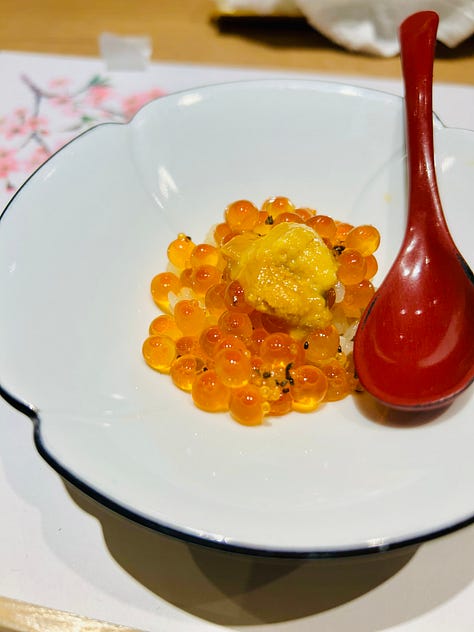
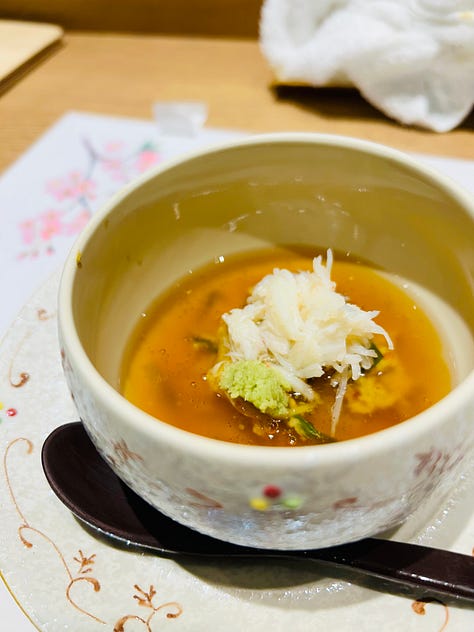
Usually you don’t order at a high end sushi place as the menu is omakase (as the chef wants), based on seasonality and availability of fresh fish.
My favorite pieces in this menu were also the mackerel (one of the best if you are into oily fish), the squid (here served with black salt), the ikura and uni (salmon roe and sea urchin). Most omakase will also feature a chawanmushi (egg custard cooked with some seafood) and at the end some maki rolls or a temaki and a piece of tamago (an egg omelette cooked very slowly, usually a testament to the chef’s skill). This particular menu had also a black sesame panna cotta as dessert, which was incredibly delicious and not very sweet at all (like most Japanese desserts). The price of this menu was 10.000 yen which is about 65$, incredibly good value for the quality and amount of food (there were many more pieces than the ones pictured here).
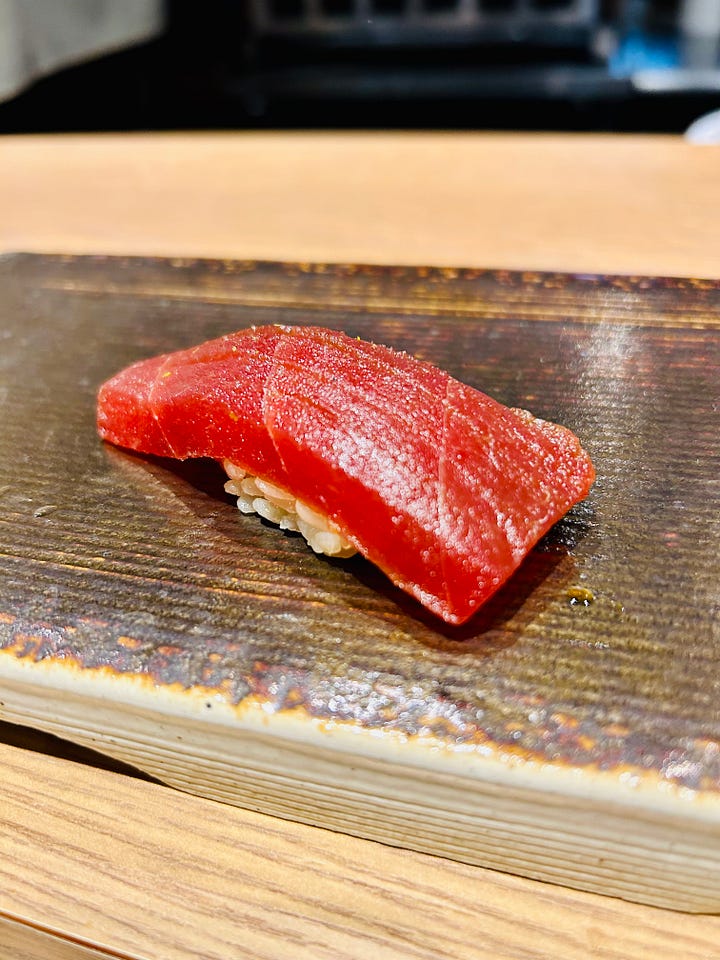
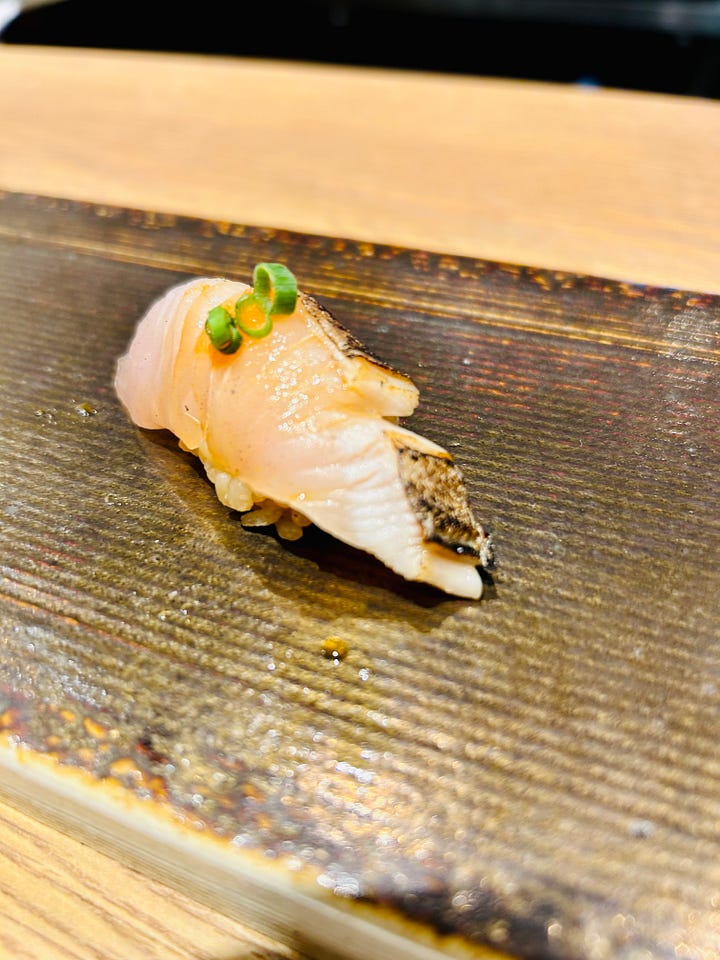
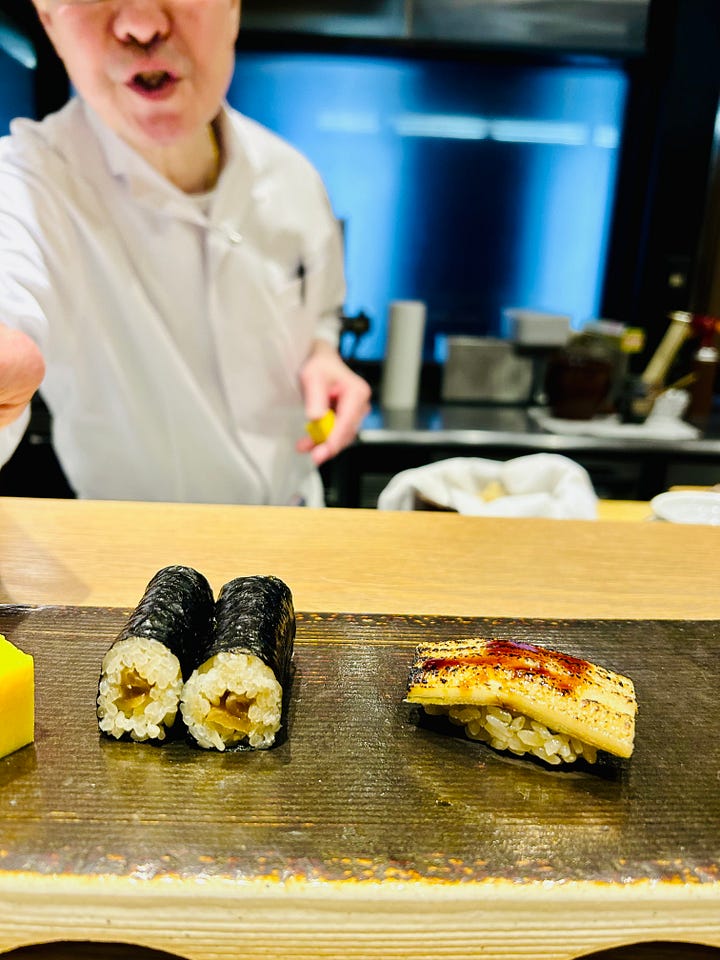

Small parenthesis to mention that sushi is food for a special occasion in Japan, especially high end sushi like this one. There are definitely cheaper sushi places, all the way down to conveyer belt sushi, which is still much higher quality than the ones in Europe and the US.
People might buy some nice bentos with Nigiri to bring home once in a while (there are amazing places selling those in basement floors of fancy department stores and in train stations), but hardly anyone even attempts to make sushi at home as far as I know. It is a type of food that requires incredible skill, mastery and time, and it is almost pointless to attempt in a home kitchen. In Japan when people feel like eating sushi-like food at home, the make what is called a temaki party. This involves buying a lot of sashimi (pre cut raw fish available in every supermarket), ikura (salmon roe) and other special treats according to what you fancy.
They then cook white rice and season it (even tho it’s pretty common to eat it unseasoned for temaki), and they prepare and cut many pieces of crunchy nori seaweed. All the ingredients are set on the table and each person makes their own temaki rolls (hand rolled sushi) adding whatever they like and seasoning it with some shoyu (soy sauce) and wasabi. One of the nights that I was with friends during this trip, we made a small temaki party and here you can see what it looked like on the table.
So next time you want to make sushi at home remember to try this instead!
Also, the whole point of nori seaweed is that it’s supposed to be crunchy, so it’s best eaten right away, as opposed to rolled into a maki-roll and left to sit for a long time only to become soggy and soft.
As I mentioned here above, my last meal was also sushi, and it was eaten at lunchtime on the day of my departure. I had booked a place called Yaesi Sushi Umi, a restaurant that had 2* in the Michelin guide for over 10 years. The only availability I found was for an early lunch and that suited my travel schedule, so I skipped breakfast and headed there for 11.30am.
One thing that you need to understand in Japan is that punctuality is a religion and you should never be late to a restaurant booking, if anything it’s better to show up 5-10 minutes early.
The other thing is that finding restaurants is sometimes really really hard. Never mind the lost in translation, this was the only thing I had trouble with in the whole 10 days I was there. I will not get into the difficulty of understanding Japanese addresses, they do not make much sense and Japanese people will be the first ones to tell you. Thank God for google maps, who seems to be quite accurate for finding locations. The only isse is that often restaurants are in basements of buildings or on upper floors, and finding the entrance can be quite challenging.
Even when you think you have found the entrance you can see something like this:
Google translate camera function can make miracles with all Japanese menus, but it often fails when the calligraphy is artistic such as here. Sometimes it manages to decipher those characters but it gives you the literal translation of the restaurant name…and not the name in Romaji itself, so you are still stuck!
If you are lucky, like in this sign here, you will notice the floor number (3F), and often this is written at the end of the very long confusing address on google maps too. In every single restaurant I visited, I entered with my phone in my hands, open to the google maps page and asked “is this the right place?”.
So my advice to you is: plan to arrive at least 15 minutes before, in case you will have a hard time finding the entrance of the restaurant.
But back to my last meal, I can definitely say this was the most amazing sushi I have had in my life…and I have had a few.
The chef here didn’t speak much English, but between my few learned Japanese food words and google translate, we managed to talk quite a lot, so much that in the end I was showing him pictures of sea urchins in Sicily and of my tuna fishing family.
This place had three chefs working at the counter, and because I was so early, I had one chef all for myself.
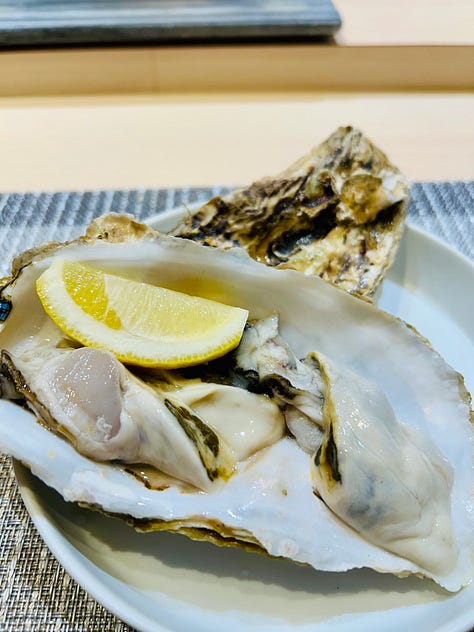
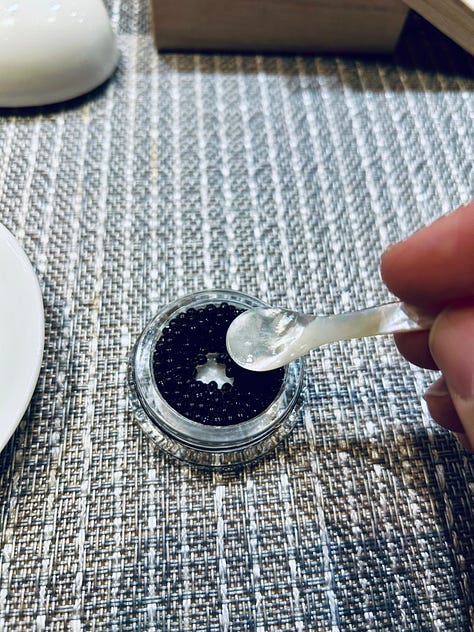
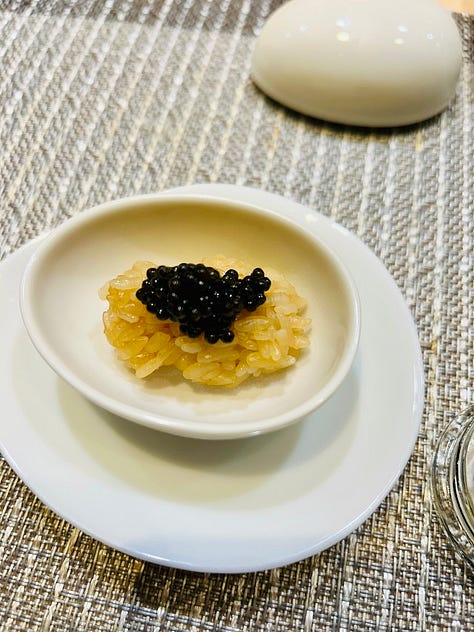
The menu started with an insanely big Japanese oyster. I was asked if I wanted it raw or grilled and I of course picked raw, to the chef’s approval. Honestly I never had anything like it, it was meaty, not overly fishy and all umami. So delicious I couldn’t speak for a minute or two. The second course was a little tub of Japanese Miyazaki caviar, also my first time trying it. I was told to eat it first with the provided mother of pearl spoon, and then to finish it on top of a small rice ball. This was also incredibly tasty, delicate and full of subtle umami. I thought to myself, if the meal is over now, I am happy to go as both those two amuse bouche were literally incredible…but of course it hadn’t even started yet.
Another small parenthesis to show you how beautiful the rice looks on the third picture here above (only picture where you can really see it. It’s golden shiny and it sticks together without being sticky at all. In both sushi places I noticed how dark the rice looked, almost like brown rice. I had never seen this before and i wonder if it is a certain quality of rice, or more to do with the seasoning (if you know please let me know here in comments). Sushi experts will tell you the the real art is in the rice, as the fish is just fish, and so much will depend on availability and seasonality…but through the mastery of rice you can really see the chef at work.
The omakase menu continued with many pieces of beautiful nigiri sushi at a steady pace. Incredible chu toro, beautiful buttery squid and other white fish that I couldn’t figure out what it was. This chef’s style didn’t feature much shoyu, but often it incorporated different types of Japanese salt which made each bite a balanced explosion of flavour in my mouth. The akami maguro (let’s say the regular tuna) had a very interesting pairing with sharp Japanese mustard and black salt and it worked wonderfully in a unexpected way.
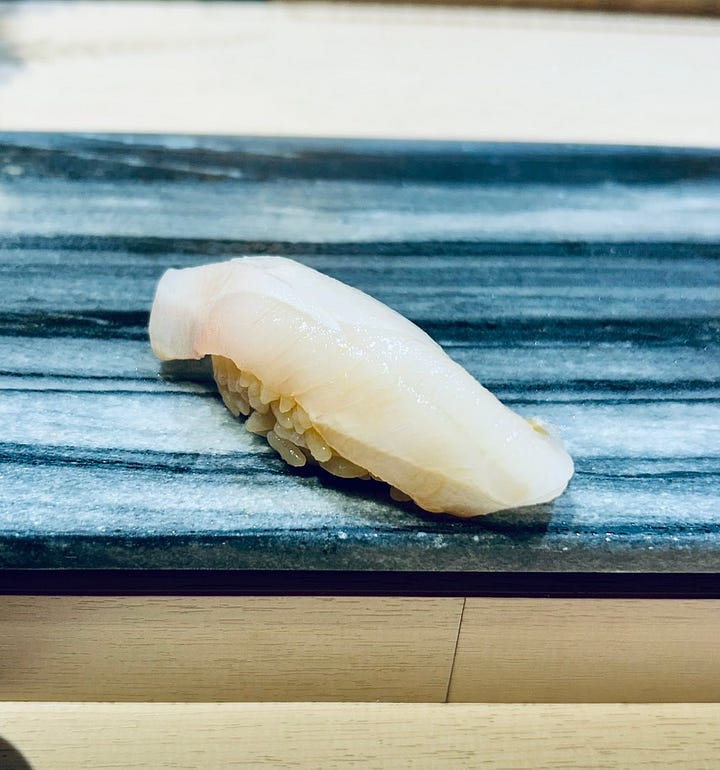

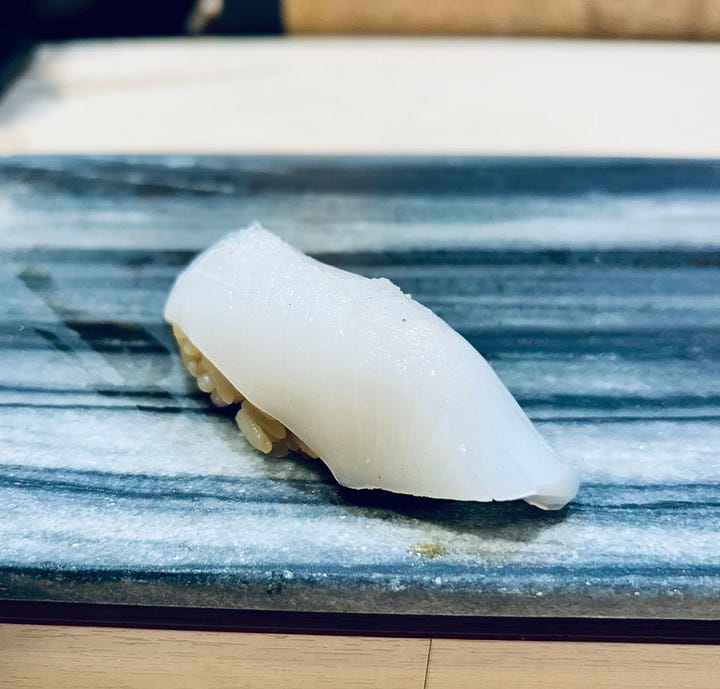
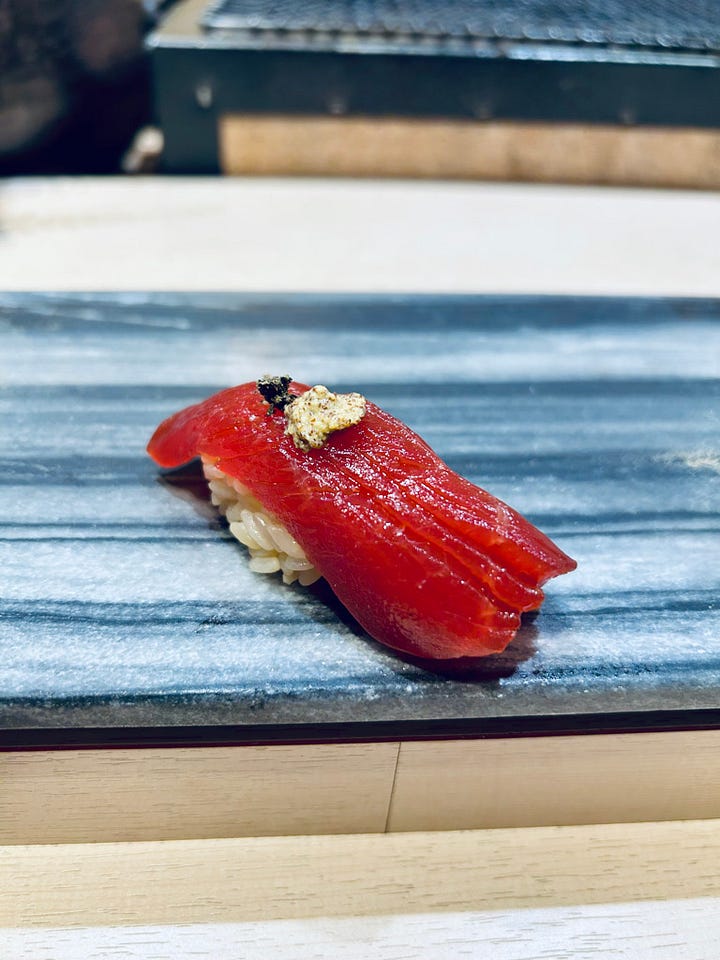
When it came to the eagerly anticipated uni (sea urchin), the chef pulled out this gorgeous box of Hokkaido uni and, after hearing my stories of fishing uni in Sicily as a child, he added a small mountain of it on top of a piece of rice. This was another tear inducing experience: the uni was so fat, but also very balanced in its umami and not overly fishy (unlike American or Italian uni).

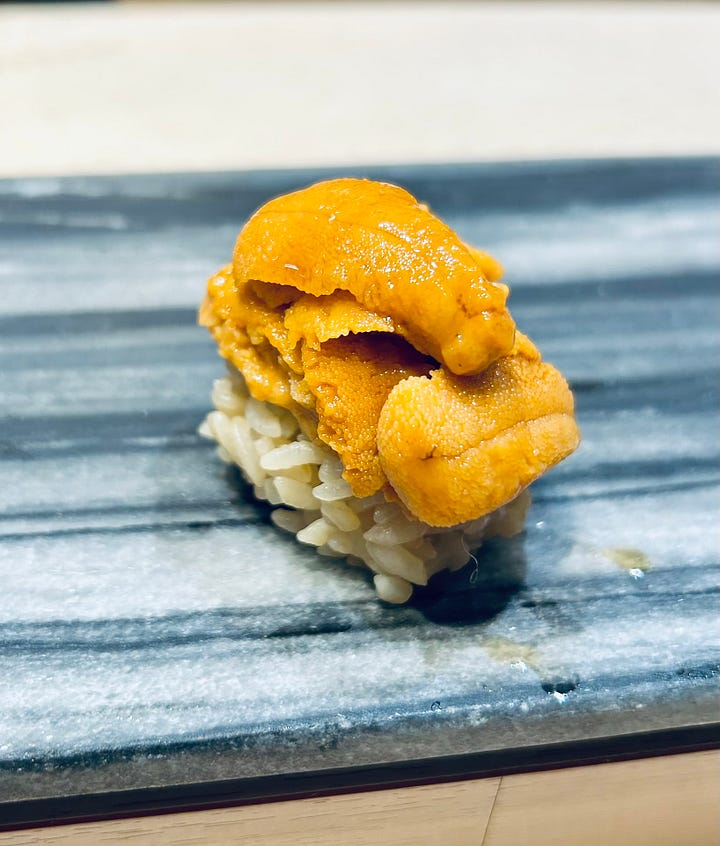
In Japan you can use the word oishii (delicious) to express your enjoyment of the food to the chef, and I think I must have said this at least 50-60 times during this meal.
The little bowl of ikura (salmon roe) and rice was also unlike any other I have tasted, not overly salty and bitter and almost sweet.
The omakase menu ended with a temaki cone made with tuna scrapings and pickles, a delicious and earthy red miso soup and a very delicate tamago.
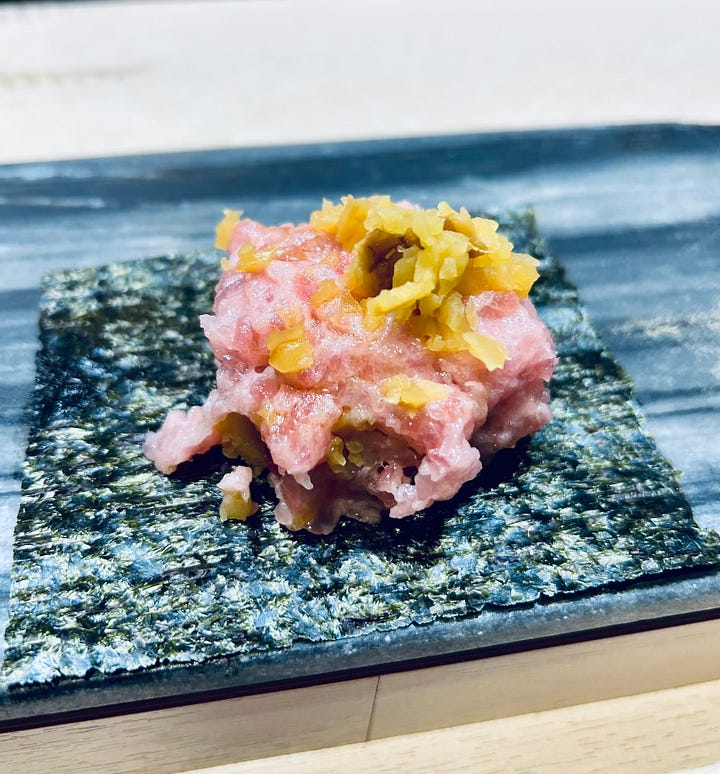

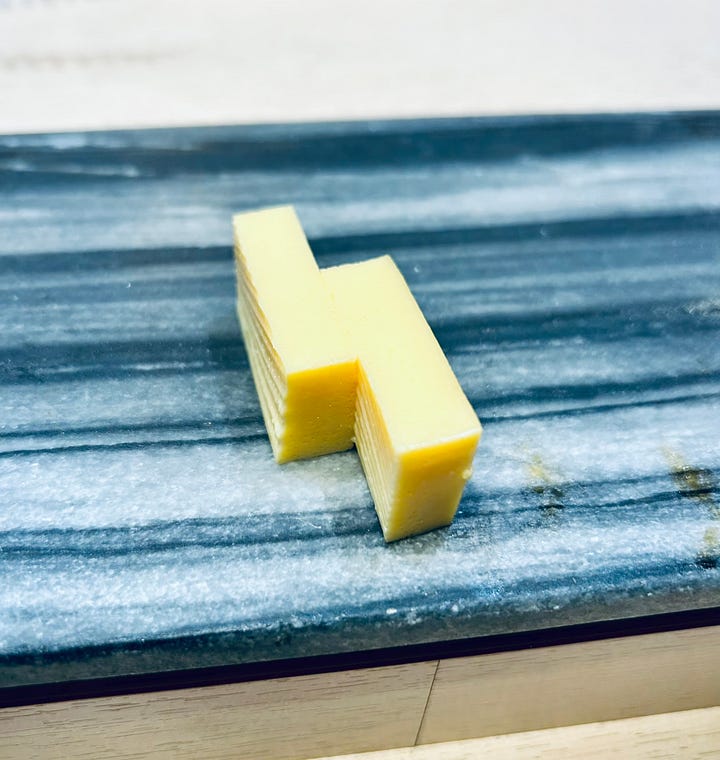
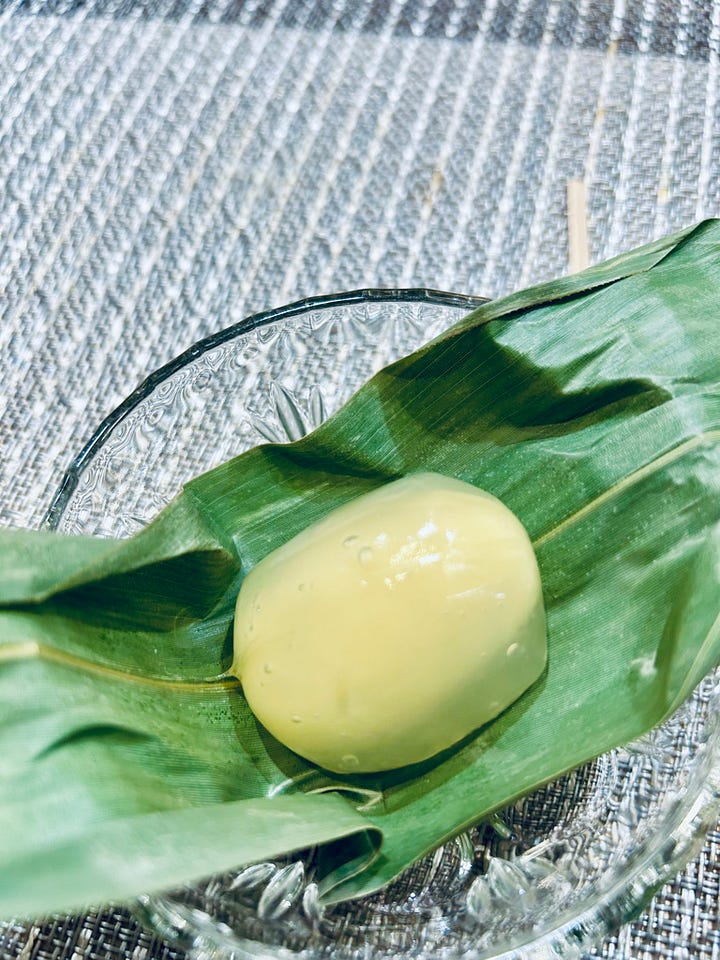
Dessert here was a mochi ball filled with custard (last pic here above), one of the desserts I enjoyed the most in this trip. Literally 10/10.
The price for this omakase was 12,000 yen, roughly 81$ and it featured way more pieces than I have pictured here…once again incredible value for money.
After an amazing meal like this one, a good sentence for you to use is “Gochiso-sama deshita” , something that expresses gratitude for all the work involved in making the food, and that my friends tell me translates literally as “thanks for running around”.
Japanese people are obsessed with food, and everyone working in the food industry is very proud of what they do. So do not be scared or intimidated by the legendary disdain of Japanese people for foreigners. In my experience if you are humble, prepared, and show your appreciation for their work and mastery, you will be treated like royalty and they will literally follow you down the street to thank you.
Ok I think this piece is getting long enough, so I will stop here, but watch this space as I will continue very soon with my Japan series.




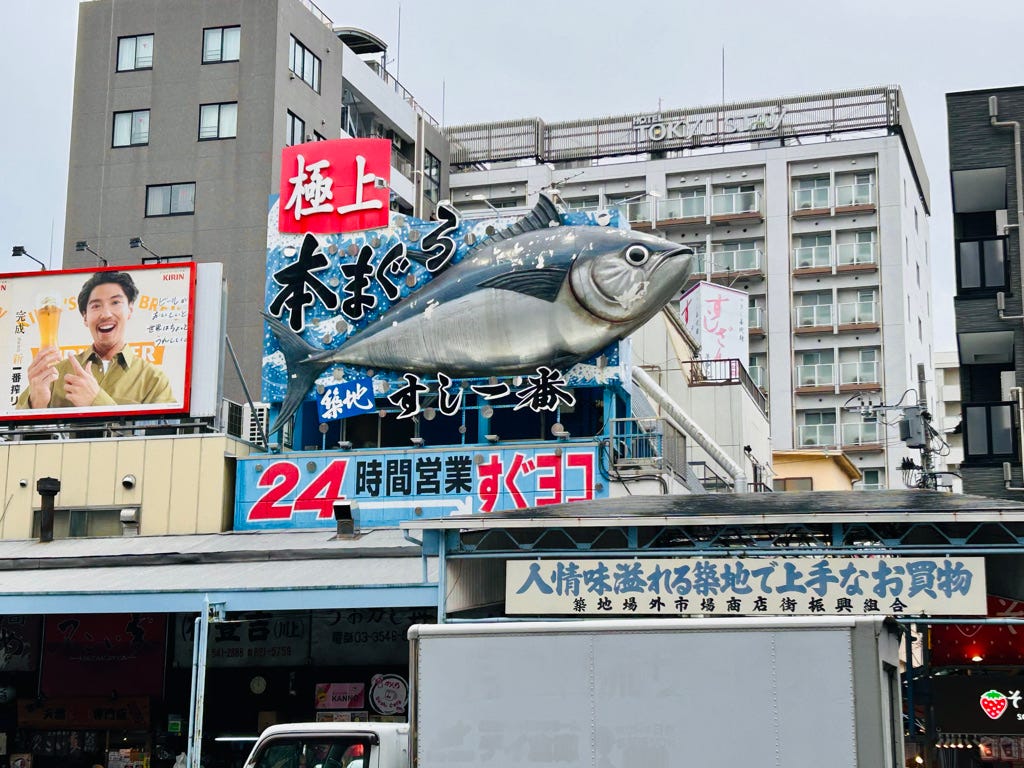

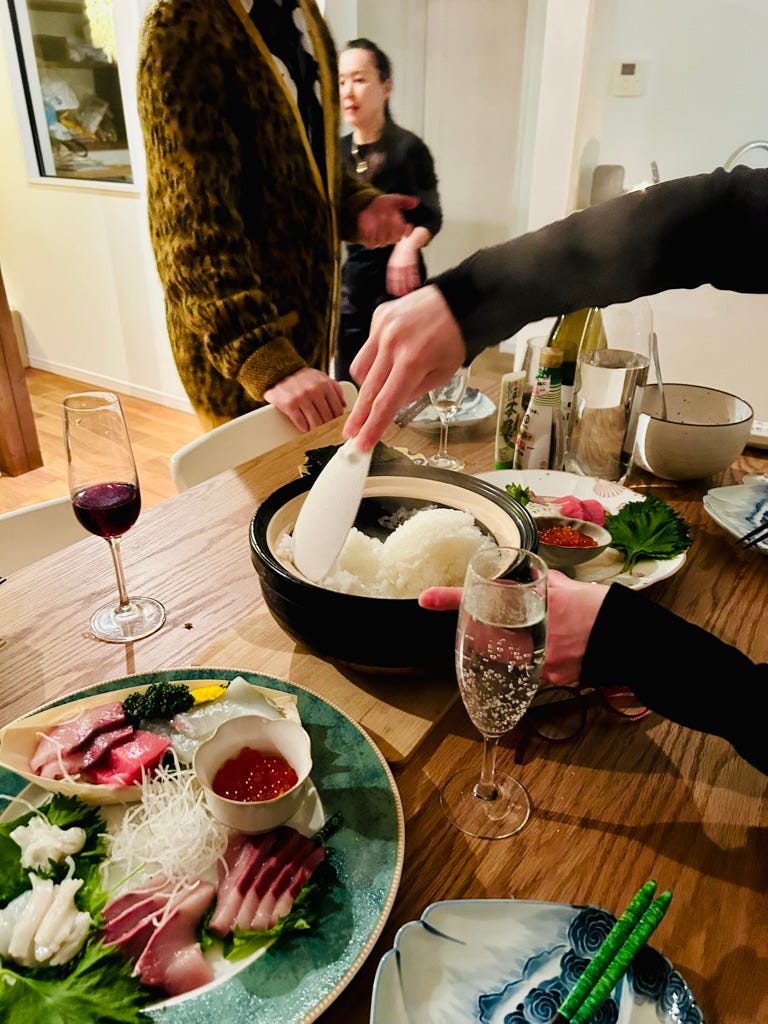
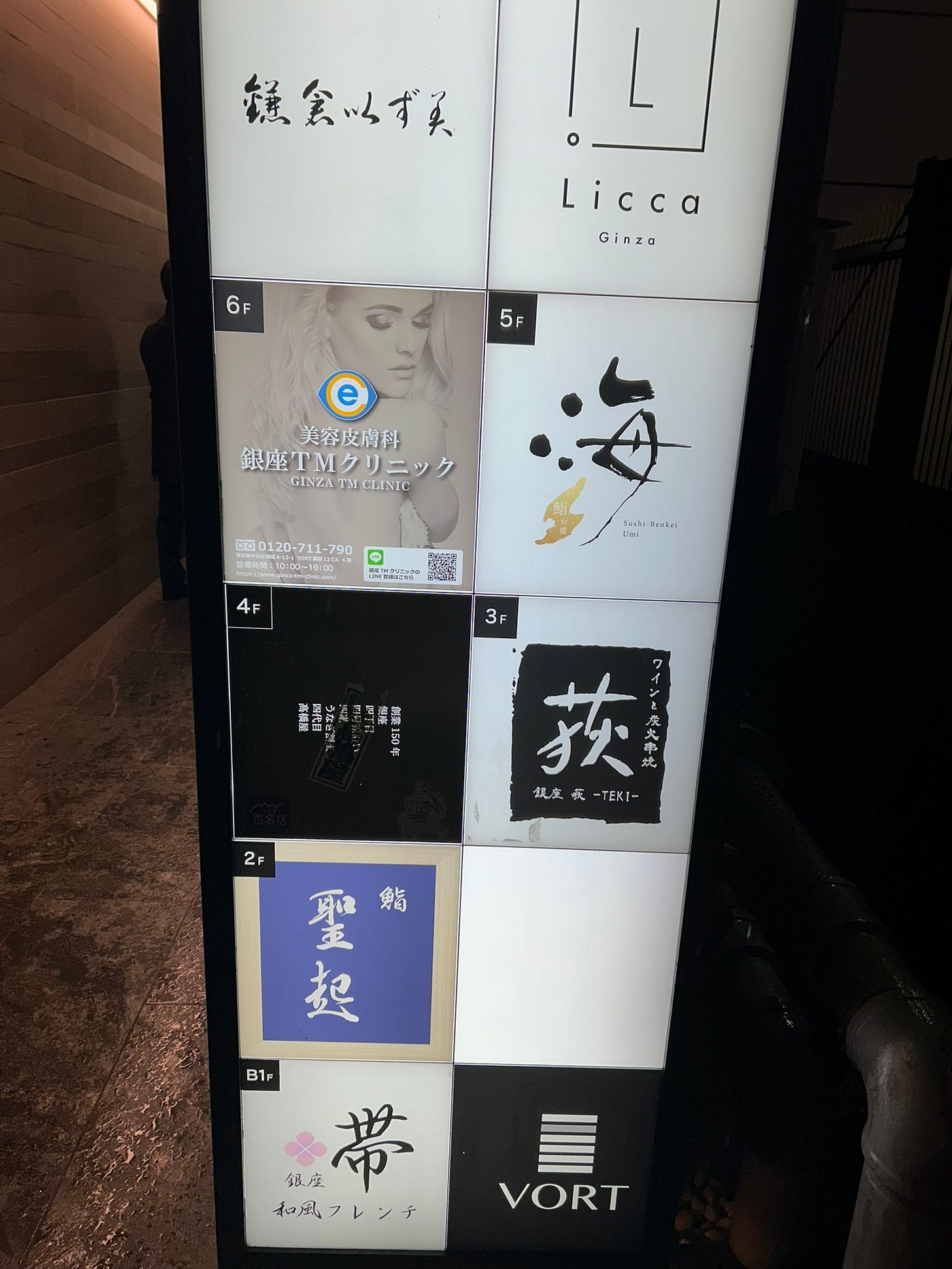

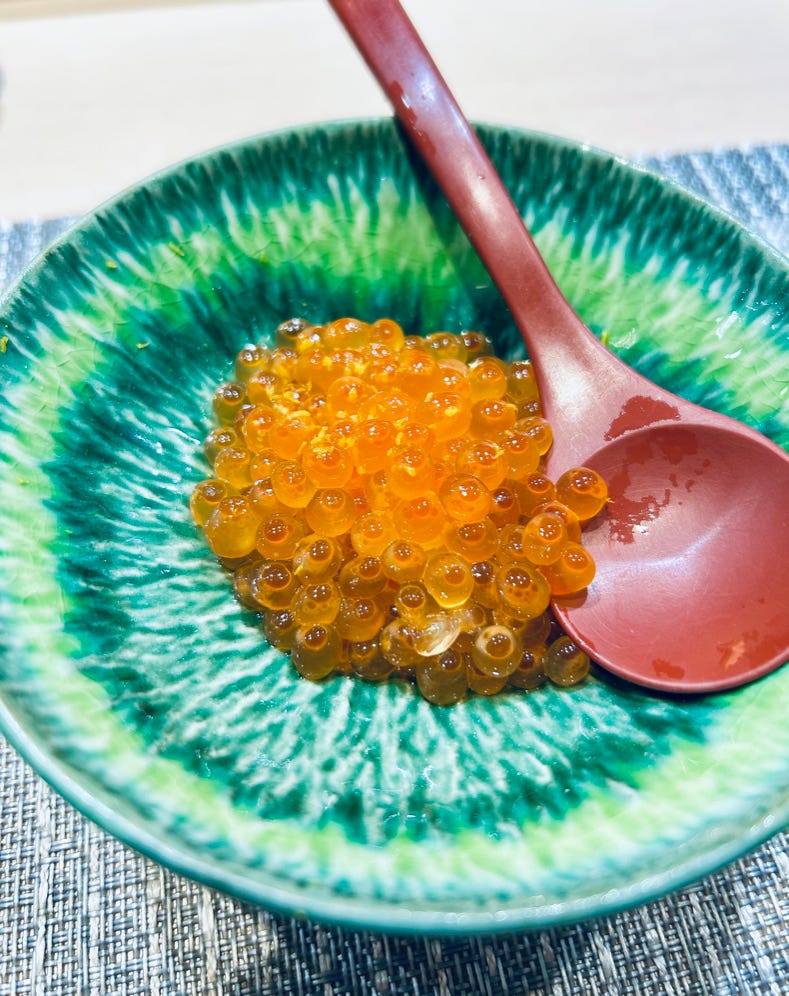
Extremely informative Francesco! Your pictures look so good I want to try all of them. This was a lot of work to put together and it is much appreciated. Grazie mille.
About the dark rice you're wondering about: I can't be 100% sure without actually seeing and eating it, but it sounds like the vinegar was aka-zu (赤酢), or red vinegar, as opposed to white vinegar you are familiar with. Please note that "赤 (aka)" means "red," and the sound of the word for vinegar, "酢 (su)," becomes "zu" in this compound noun.
I wasn't even aware of this type of vinegar until a few years ago (even though I was born and grew up in Japan), when I noticed a lot of sushi chefs use aka-zu while watching a TV show, and I started seeing sushi shops that advertise they use aka-zu. I learned that its use spread in the Edo period for Edo-mae-zushi, but then sort of disappeared, and now it's back in fancy sushi restaurants.
You can learn about the red vinegar here:
https://yokoi-vinegar.com/about-japanese-vinegar
The following website (all in Japanese) might be helpful in comparing the colors of the white vinegar sushi rice and the red vinegar sushi rice:
https://blog.pocket-concierge.jp/differences-between-akashari-siroshari/#i-1
I've really enjoyed your food pictures and stories. Thank you so much for sharing!